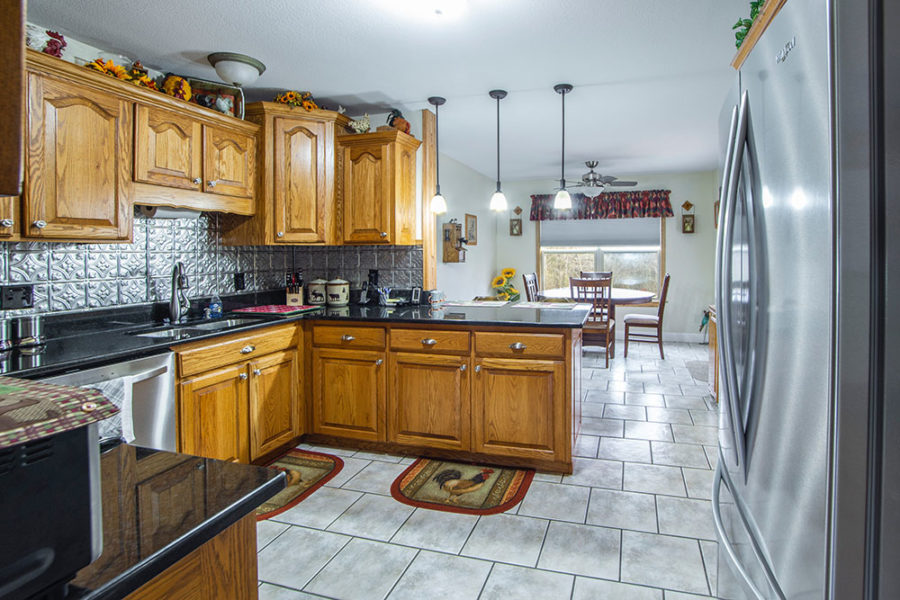There are a seemingly limitless number of sub-style’s and design aesthetics to choose from when you’re gearing up to design and build your dream kitchen. Then, there’s a thousand other options and features you may have seen in design magazines, friends’ houses, and in the media – but the truth is, there are only three key pillars of kitchen design you need to consider to narrow your vision and refocus on your kitchen design plans.
Planning your course of attack on your existing kitchen is one of the single greatest feelings many homeowners feel prior to passing the renovation point of no return. The proverbial butterflies have departed, the uncertainty of the decision-making process is gone, and you’re ready to roll up your sleeves and design your dream space – knowing ahead of time what type of kitchen design you’re focusing on will help you to visualize your end goal, and steer clear of features and idea that pop up and derail your design.
Gauge the overall aesthetic of your home to get a head start, and successfully blend your new kitchen in with your home.
Traditional / Old School

Traditional kitchen designs are generally elegant and decorative spaces that are just as much about crown moldings, fine finishes, ornate corbels, raised and/or recessed cabinetry, and classic stains and colours as they are about functionality, practicality, and streamlined work space.
Old school kitchen aesthetics may include the subgroups of:
- Country
- Rustic
- Coastal
- Colonial
- French
- Old World
These varying sects of traditional kitchen designs all typically have a few things in common that unite them under this banner; namely natural materials and colours. Traditional kitchens embrace use of natural stone and stained woods to help bring detail to the space. Expect to see warm, neutral colours of cream, grey’s, light greens, and pastels in traditional kitchen spaces, coupled with the unique imperfections of stone, tile, and wood grain.
You won’t find any laminate flooring in a traditional kitchen, either. Expect to be inundated by tile, patterned stone, and good old fashioned stained hardwoods. For the upscale traditionalist, the kitchen may include a stunning custom range hood that boasts custom metalwork and plaster features, and even carved wood or soft stone.
Modern
Modern design and its cousin, contemporary design, are chronically misinterpreted – and there’s good reason why: they can mean entirely different things, but somehow they wind up in the same discussions regarding kitchen style. Let us explain:
Modern kitchens can include use of materials like:
- Stainless steel
- Glass
- Concrete
- Lacquer
- Bold colours used as accents in European inspired monochromatic colour palettes
- Plastics
Subgroups of modern kitchens can include:
- Scandinavian
- Minimalist
- Eat-in style
Modern kitchen design is typically a mid-century reference to 1920-1950’s minimalism, streamline open concept space, and Scandinavian inspired design sensibilities that interweave natural materials like wood and brick with angular metal surfaces and monochromatic colour palettes. In short, it was the antithesis of the established design styles of the day – and in that sense, modern design ironically never changes and is not a current representation of trending design.
Contemporary / Eclectic
Contemporary kitchen design, on the other hand, constitutes recurring and current design styles that are popular today. Contemporary style borrows and pulls its inspiration from nearly all other types of design styles, and in this sense, can be confused for modern design. Contemporary design does differ, however, by embracing curves.
Contemporary kitchens can include:
- Cutting-edge appliances
- Lighter materials, better performance, etc
- A blend of old and new materials
- Think barn beam in a kitchen that features glass and concrete
- Wild backsplashes
- Glass mosaic tile, stainless steel, ceramic tile, stone
- A mix of shapes/materials
- Layered ornamentation, round lights/straight islands, contrasting patterns, multiple different countertop materials
- Creative lighting options
Contemporary kitchens are modern, in that they embrace state-of-the-art technology and materials that may hearken back to modernism, but the difference is that style may change, or include other design elements that borrow from polar opposite mindsets. They can be earthy, eclectic, organic, and sterile – all at the same time, making this design pillar one of the most popular of today.
The three key pillars of kitchen design include unique subgroups and visual cues that will help define your own personal kitchen style and reflect your own individual style. Whatever you end up choosing – the gist of these pillars is to help homeowners, renovators, and dreamers begin to pool their resources and creativity around a design style that helps accentuate and bring forward your own individual style – not corner you in a style trap.
KAD is well-versed in discussion and finding solutions for all varying types of kitchen design aesthetics – from ultra modern mid-century spots, to the perfect eclectic storm, we believe the kitchen should always be a true reflection of the people who use it.